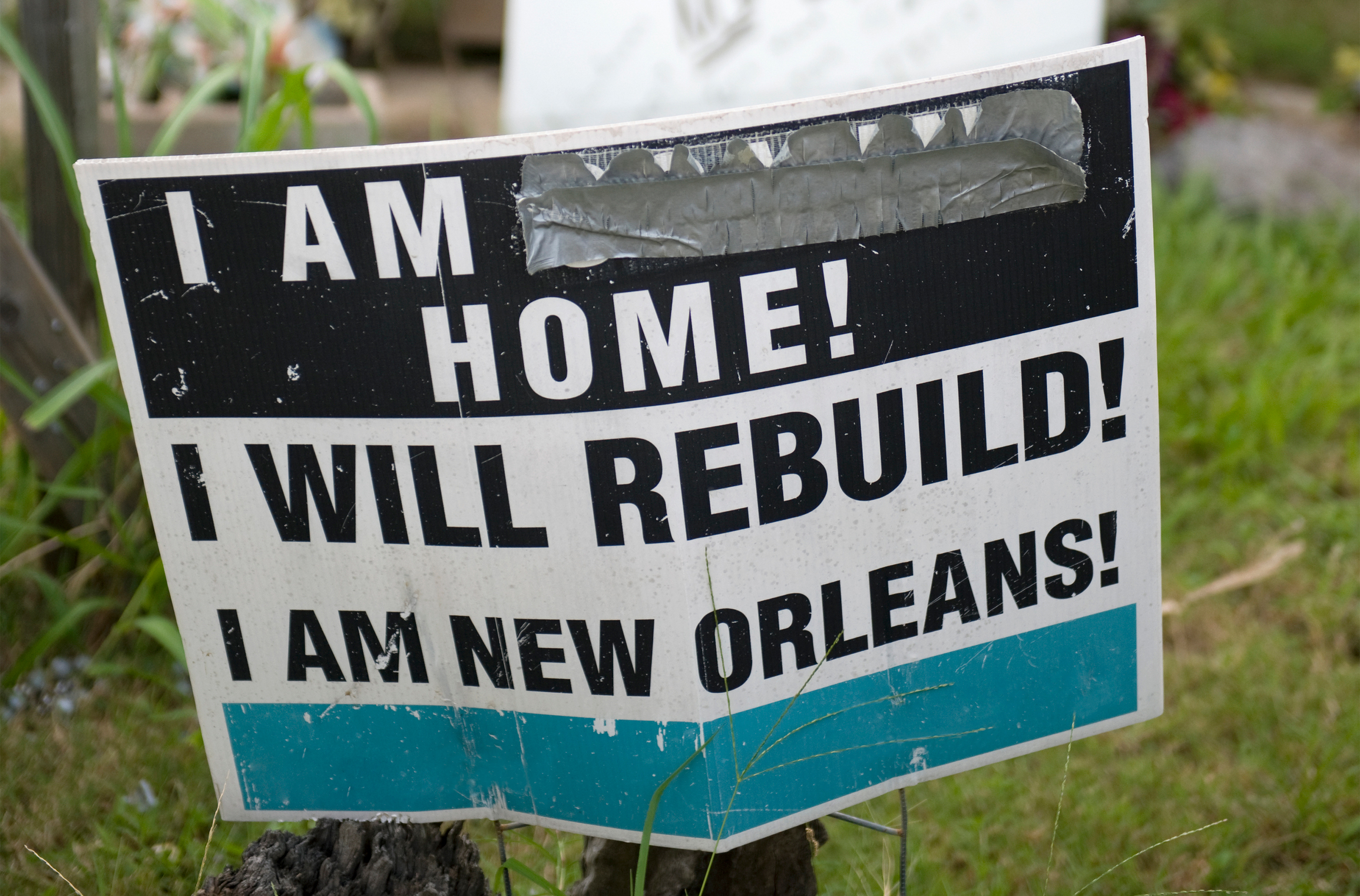In August 2015, Hurricane Katrina hit the coast of New Orleans with devastating effects. The damage and the forced displacement of people was unlike any disaster in the recent history of the United States, triggering a state of emergency that would require an unprecedented scale of emergency response. Although many residents returned within a few days of the disaster to assess their properties, many residents were prohibited from returning for several weeks as they waited for flood waters to recede from low lying areas and for clean up crews to finish removing debris.
The local government had an enormous task ahead. The mayor quickly established the Bring New Orleans Back Commission, a panel of active citizens from New Orleans to help inform, plan and rebuild the city. The commission worked quickly to address pressing issues and in just four months, the infamous Green Dot plan was revealed.
The Commission proposed that the physical footprint of the city should shrink due to the number of residents who were unlikely to return to New Orleans after the disaster. The recovery plan therefore outlined how communities located on higher ground, would have access to building and planning experts and financial support immediately, while communities in lower lying areas (which were hit hardest by the storm), would need to put together a business case justifying why they should be rebuilt. The plan earmarked these areas (such as the lower ninth district) to become green space, with a buyback scheme proposed to compensate home owners.
In terms of mitigating future damage and protecting its residents, the Green Dot plan was well considered and yet, it was received with overwhelming community disapproval.
So what went wrong?
Here are the five key community engagement lessons we can take from Hurricane Katrina:
Make your advisory group representative
While the Commission was representative of the population in terms of race (equal numbers in African-American and Caucasian group members, along with one Hispanic member), the lack of further community consultation beyond the panel, particularly with lower socio-economic demographics meant that many voices from the areas marked for redevelopment went unheard. Upon unveiling, a resident was heard remarking, “How many people from my backyard are up there?” – which is exactly what you don’t want to hear.
Creating an advisory group is just one of many ways to gain community participation in a planning process, and can be combined with range of other methods such as surveys, interviews, pop ups and meetings to get a more in-depth understanding of community needs.
Inequalities don’t disappear when disaster strikes
Real estate developer, Joseph Canizaro who spearheaded the plan on behalf of the Bring New Orleans Commission understood its controversial nature even before the plan was released. “Unfortunately, a lot of poor African-Americans had everything they owned destroyed here,” he said. “So we have to be careful about dictating what’s going to happen, especially me as a white man.”
Discriminatory lending policies that existed before Hurricane Katrina meant that African-American homeowners had no choice but to buy into less expensive lower lying areas of New Orleans. This resulted in around 80 percent of the African-American population having their homes earmarked for redevelopment.
Don’t turn recovery into a competition
Recovery shouldn’t be achieved through a competitive process. The structure of the Green Dot plan meant that communities that were hardest hit by loss of life and property damage, faced significant delays and had to work twice as hard to access financial support to rebuild. While the municipality provided access to a range of experts to support communities to write their business case to prove their viability, it created an unfair competition in which the communities with the least ability to self-organise were required to do so in a very short period of time.
People power is a beautiful thing
“I’m ready to rebuild and I’m not letting you take mine. I’m going to fight, whatever it takes, to rebuild my property…. I’m going to suit up like I’m going to Iraq and fight this.”
That is what a lower ninth resident said upon the release of the Green Dot plan. Often in disaster there is a tendency to view affected communities as victims, but often in reality, many get on with rebuilding their lives well before the official government emergency response agencies kick into gear.
Similarly, when faced with the prospect of writing the business case for the Broadmoor community, Broadmoor Improvement Association President, LaToya Cantrel said, “l wasn’t about to go down without a fight.” Cantrel mobilised a revitalisation committee that partnered with private university planning programs for training and assistance, and a convened a ‘repopulation committee’ that assigned block captains to track down missing neighbours and to find out whether they intended on returning. Cantrell stated, “If you don’t know where your people are, or what their needs are, how can you really plan?”
It’s voices like LaToya’s that The Bring New Orleans Back Commission so desperately needed to hear.
Social change requires a journey owned by the people
Drastic changes can’t be implemented over night, which is why community preparedness is key. Having conversations early about potential changes to the city that will impact residents in the future, will give communities the chance to provide input and take ownership over those changes, reducing conflict when the time for change arises.
Carolyn Lambert is Conversation Caravan’s Conversation Facilitator specialising in Arts and Culture and Community Resilience. She’s a member of the Creative Recovery Network and is currently a participant in the Master of Disaster, Design and Development Program (MoDDD) at RMIT.


